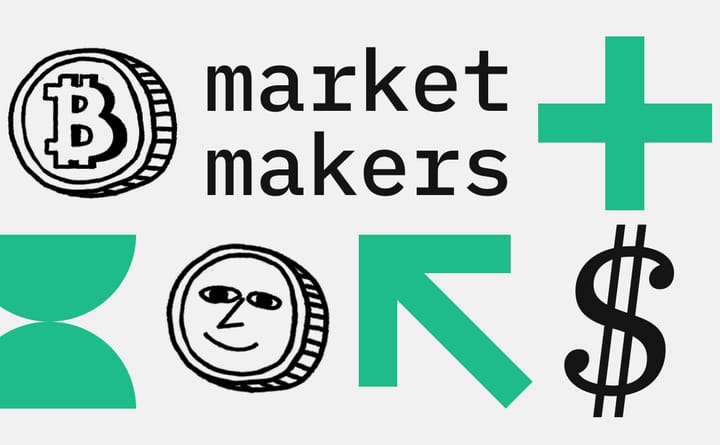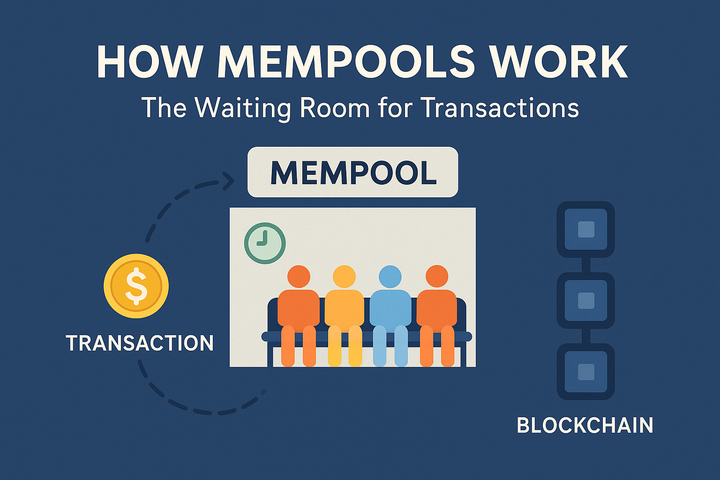DeFi as a Settlement Layer: How the Next Cycle Will Bypass CeFi Entirely

Abstract
Decentralized Finance (DeFi) is rapidly evolving beyond its initial disruptive phase to becoming a core settlement infrastructure underpinning global financial markets. This article explores how the next cycle in finance will see DeFi bypass traditional Centralized Finance (CeFi) entirely, acting as the backend for global trade and capital flows. We analyze real-world asset (RWA) tokenization, tokenized treasuries, the vital role of stablecoins in trade settlement, and the emergence of DeFi-native credit systems. Together, these innovations unlock new paradigms in liquidity, transparency, accessibility, and resilience that position DeFi as the foundational layer of tomorrow’s financial system.
1. Introduction: The Rise of DeFi and the Limitations of CeFi
For decades, the global financial system has largely been centralized dominated by banks, clearinghouses, custodians, central authorities, and financial intermediaries. This traditional model, known as Centralized Finance (CeFi), consolidates control but often suffers from high costs, inefficiencies, opaque governance, and limited access for billions worldwide.
In contrast, Decentralized Finance (DeFi) leverages blockchain technology to reimagine financial services in a decentralized, automated, and permissionless manner. Early waves of innovation centered on decentralized exchanges, lending protocols, and yield farming within crypto-native ecosystems.
Today, DeFi’s horizon is broadening to include real-world assets, sovereign debt, automated settlement, and credit provision effectively evolving into a foundational settlement layer that can rival or surpass CeFi in scale and capability. This article explains how and why this transformative shift will make CeFi obsolete as the primary settlement infrastructure in the next financial cycle.
2. Understanding Settlement Layers in Finance
A settlement layer refers to the underlying infrastructure or system where ownership transfers, final payments, and trade clearances are executed — essentially the “backend” where value crosses hands securely and irreversibly.
Currently, CeFi settlement layers consist of:
- Centralized clearinghouses and custodians guaranteeing trade completion
- Trusted intermediaries such as banks that maintain custody and payment rails
- Batch processing and reconciliations that can introduce time delays and operational risks
In DeFi, settlement layers are realized on-chain via smart contracts on blockchains like Ethereum, Solana, and others. These programmable, transparent, and immutable ledgers enable real-time, atomic settlement of financial transactions without the need for offline reconciliation.
3. Real World Assets (RWAs): On-Chain Representation of Offline Value
One of the critical breakthroughs enabling DeFi as a settlement layer is the on-chain tokenization of Real World Assets (RWAs). RWAs represent physical assets or claims off-chain that are mapped onto blockchain tokens, unlocking new liquidity and financial utility.
Examples of RWAs on DeFi
- Real estate: Property ownership fractions or rental income rights tokenized to enable 24/7 global trading and liquidity.
- Commodities: Gold, oil, agricultural products represented by tokens linked to real-world stores or inventories.
- Invoices and receivables: Business debts and invoices digitized into tokens to allow immediate financing or secondary market trading.
- Art and collectibles: NFT-backed assets with real-world ownership claims.
Integrating RWAs on-chain allows DeFi protocols to offer traditional asset-backed loans, yield products, and derivatives directly to the blockchain-native ecosystem, reducing dependency on CeFi middlemen. It also broadens DeFi’s total addressable market by bridging off-chain value into programmable finance.
3.1. Tokenization Architecture and Custody
To ensure RWAs reflect verified ownership rights, tokenization platforms use compliance protocols, legal wrappers, and custodianship arrangements, creating hybrid systems combining blockchain’s automation and traditional legal frameworks.
Protocols like Centrifuge and Maple Finance lead innovation by connecting real-world credit data and assets on-chain, enabling DeFi-native credit products backed by RWAs.
4. Tokenized Treasuries: Blockchain Redefining Sovereign Debt Settlement
Government debt markets represent trillions in assets, but traditional treasury bonds face settlement delays, administrative overhead, and accessibility constraints. Tokenizing government bonds changes this dynamic.
4.1. What is Tokenized Treasuries?
Tokenized treasuries are digital representations of sovereign bonds or other government-backed securities issued and traded on blockchain networks. These tokens confer ownership rights to bondholders and automate interest payments and maturity executions through smart contracts.
4.2. Benefits to Global Markets
- Instant settlement: Tokenized treasuries can settle trades instantly and 24/7, eliminating multiday clearing cycles.
- Fractional ownership: Small investors can gain exposure by owning tiny units of bond tokens.
- Broadened access: Global investors can participate without intermediaries or restrictive geographic barriers.
- Automated coupons and maturity: Smart contracts automate interest distribution and principal redemption.
Projects like Figure Technologies and initiatives from traditional financial institutions have piloted tokenized treasuries, pointing toward future mass adoption where DeFi systems become the backbone of sovereign debt markets.
5. Stablecoins: The Crucial Medium for On-Chain Settlement
Volatility has long been an obstacle to cryptocurrencies serving as reliable settlement mediums. Stablecoins — cryptocurrencies pegged to fiat currencies or baskets of assets — address this, becoming the lifeblood of DeFi’s settlement layer.
5.1. Popular Stablecoins and Their Use Cases
- USDC (USD Coin): A fully-backed fiat stablecoin widely used for trading, lending, and payments in DeFi.
- USDT (Tether): The largest stablecoin by market capitalization, supporting high liquidity across exchanges.
- DAI: A decentralized stablecoin governed by MakerDAO, backed mainly by crypto collateral on-chain.
5.2. Stablecoins enable:
- Seamless settlements: Traders and market participants settle transactions instantly without waiting for fiat bank processes.
- Liquidity provision: Liquidity pools leverage stablecoins to facilitate off-ramp and on-ramp to fiat economies.
- Cross-border finance: Users globally access stable-value tokens without foreign exchange or remittance costs.
- Integration with RWAs and tokenized treasuries: Stablecoins form the base currency for many asset purchases and loan settlements on-chain.
The expansive adoption of stablecoins as a global settlement medium signifies DeFi’s breakthrough in building a scalable financial infrastructure that is fiat-compatible but decentralized and programmable.
6. DeFi-Native Credit Systems: Reimagining Lending and Credit
Traditional credit systems rely heavily on centralized institutions performing credit assessments, loan underwriting, and enforcement, creating barriers and inefficiencies.
DeFi's native credit systems leverage blockchain’s transparency and data to build automated, permissionless lending markets without intermediaries.
6.1. How DeFi Credit Works
- On-chain collateralization: Borrowers deposit crypto assets as collateral managed by smart contracts.
- Algorithmic risk assessment: Creditworthiness corroborated through transparent transaction history, social staking, oracles, and on-chain identity.
- Automated liquidations: Smart contracts monitor collateral value and auto-liquidate when thresholds are breached, reducing lender risk.
- Credit delegation and pools: Lenders pool funds with algorithmic risk distribution, enabling credit provision tailored to borrower profiles.
Emerging Innovations
- Credit Scoring on-chain: Projects like Centrifuge and Aave experiment with integrating real-world credit data and social proofs for decentralized lending.
- Flash loans and instant credit: Novel DeFi-native tools allowing risk-free, uncollateralized loans within single transactions powering arbitrage and liquidity.
- Decentralized Insurance: Protocols offering coverage against loan defaults or smart contract failures, fostering trust in credit markets.
The emergence of these credit primitives enhances DeFi’s ability to substitute CeFi lending and financial intermediation functions effectively.
7. How DeFi Settlement Layer Will Bypass CeFi Entirely
The convergence of RWAs, tokenized treasuries, stablecoins, and DeFi-native credit creates strong network effects that enable a full-fledged financial infrastructure:
- End-to-end on-chain settlement: Trades, loans, and asset transfers occur fully on-chain in near real-time, eliminating batch clearing delays.
- Reduced counterparty and systemic risks: Smart contracts enforce agreements automatically, reducing trust dependence on centralized intermediaries prone to failure or fraud.
- Open access: Anyone globally with an internet connection and a wallet can access financial instruments traditionally reserved for institutional players.
- Programmability: Automated composability allows integration with other DeFi protocols enabling complex, programmable financial products.
- Cost efficiencies: Automated processes and elimination of intermediaries drastically reduce transaction fees and friction.
As a result, we anticipate a financial market cycle where market participants prefer DeFi settlement infrastructure’s transparency, speed, accessibility, and programmability over traditional CeFi layers — leading to CeFi’s role as a back-office or legacy system shrinking significantly.
8. Benefits to Global Markets and Users
DeFi settlement layers promise profound impacts on the global financial ecosystem:
- Financial Inclusion: Lower barriers to entry expand participation to underserved populations and regions lacking traditional banking.
- Transparency and Trust: Public blockchains provide auditability and reduce fraud or corruption risks present in opaque markets.
- Cross-border Efficiency: DeFi enables near-instantaneous, low-cost international payments and trade settlements.
- Innovation Acceleration: Open, composable protocol architectures allow new products like automated derivatives, insurance, and credit markets to evolve rapidly.
- Resilience: Decentralized nodes and automated enforcement enhance system robustness versus centralized failure points.
9. Challenges and Considerations
While promising, DeFi’s rise as a settlement layer still faces challenges requiring diligent management:
- Regulatory Landscape
The decentralized nature challenges traditional jurisdictional compliance frameworks. Regulators worldwide are grappling with how to protect consumers while encouraging innovation. Adaptive, principles-based regulation tuned to DeFi’s unique characteristics is essential. - Security Risks
Smart contract vulnerabilities, exploits, hacks, and oracle failures pose real threats. Industry-wide adoption of rigorous code audits, bug bounties, decentralized validation, and insurance products are vital to mitigate risks. - Market Volatility and Liquidity Risks
Although stablecoins reduce currency risk, crypto-asset markets remain volatile. Crisis liquidity events can cascade, stressing DeFi protocols. Robust risk models and decentralized reserve management become increasingly important. - Legal and Custodial Ambiguities
Tokenized RWAs and securities need clear legal frameworks for ownership transfer, dispute resolution, and custody areas where traditional finance expertise and blockchain innovation must converge.
Conclusion
The evolution of DeFi from experimental protocols to a robust settlement layer capable of handling real-world assets, tokenized government treasuries, stablecoin-based settlements, and decentralized credit represents a paradigm shift. This next financial cycle is poised to bypass traditional CeFi by offering a more open, permissionless, efficient, and transparent backbone for global markets. While challenges remain particularly in regulatory adaptation and security the benefits to inclusion, efficiency, and innovation are profound.
Financial markets and participants poised to embrace and build on this foundation will drive the future of global finance and empower a truly democratized economy.
OFFICAL LINKS
- Mitosis University
- Explore Mitosis Now
- Mitosis Documentation blog
- Join the Mitosis Discord Community
- Follow Mitosis on Twitter (X)



Comments ()